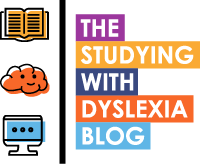Let's face it we are all different and have different ways of learning. If we have dyslexia then we could be facing a whole range of challenges associated with learning and being dyslexic.
This blog post is the third part of my guide on assistive technology that can be used to build the confidence of dyslexic learners. In my second post I focused on a technique called 'Mind Mapping' which is a fun and engaging way to get ideas out of the brain and into a shareable format. It can also be used to build documents for school coursework.
This next part of the series is about the different types of reading and writing software that is available to support learning.
There are literally hundreds of packages out there, free and premium, that can be used to support students in secondary education and beyond.
I am going to focus on a few that I have come across that could be useful to you.
First up, there is one piece of software which I believe is unique in it's delivery. It relies on the user to dictate what they want to write with no need for using a keyboard.
This software is called Dragon Naturally Speaking.
Here is a video demo of the software.
So this software is great for someone who does not like to type or struggles to decode what they want to say into a typed format.
This software does take a little bit of training so that the computer can understand your voice and you would need to learn a number of key commands in order to get the software to do tasks during writing such as put in punctuation etc.
The software can also be used to open up programs on the computer, send emails and update social networks etc.
A good microphone is required to make this software as reliable as possible.
In the UK this software retails at about £140.
I understand that Dragon Naturally Speaking has a plugin for Matchware's Mind View, mind mapping software which when I looked at it seemed to be a very powerful combination.
Have you used this software? How did you find it? Please comment below on your experiences.
My next blog in this series will look at the more conventional tools that can be used to boost confidence when studying.
Check back soon...
This blog post is the third part of my guide on assistive technology that can be used to build the confidence of dyslexic learners. In my second post I focused on a technique called 'Mind Mapping' which is a fun and engaging way to get ideas out of the brain and into a shareable format. It can also be used to build documents for school coursework.
This next part of the series is about the different types of reading and writing software that is available to support learning.
There are literally hundreds of packages out there, free and premium, that can be used to support students in secondary education and beyond.
I am going to focus on a few that I have come across that could be useful to you.
First up, there is one piece of software which I believe is unique in it's delivery. It relies on the user to dictate what they want to write with no need for using a keyboard.
This software is called Dragon Naturally Speaking.
Here is a video demo of the software.
So this software is great for someone who does not like to type or struggles to decode what they want to say into a typed format.
This software does take a little bit of training so that the computer can understand your voice and you would need to learn a number of key commands in order to get the software to do tasks during writing such as put in punctuation etc.
The software can also be used to open up programs on the computer, send emails and update social networks etc.
A good microphone is required to make this software as reliable as possible.
In the UK this software retails at about £140.
I understand that Dragon Naturally Speaking has a plugin for Matchware's Mind View, mind mapping software which when I looked at it seemed to be a very powerful combination.
Have you used this software? How did you find it? Please comment below on your experiences.
My next blog in this series will look at the more conventional tools that can be used to boost confidence when studying.
Check back soon...

